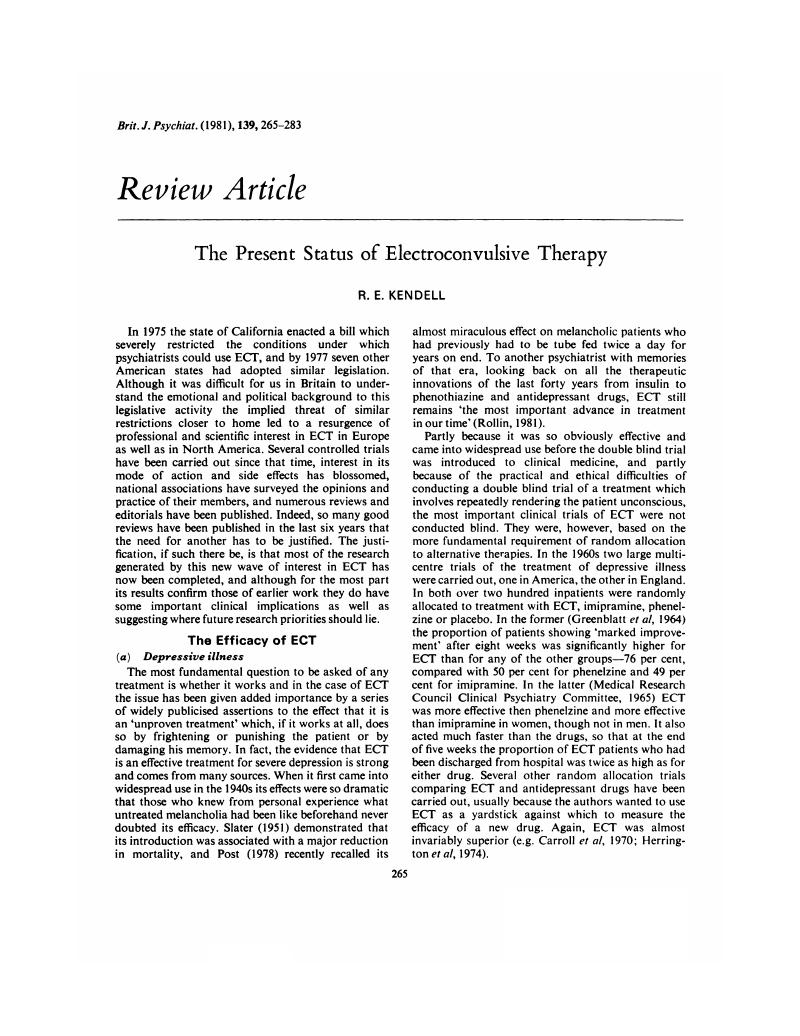Crossref Citations
This article has been cited by the following publications. This list is generated based on data provided by Crossref.
1981.
ECT in Britain: a Shameful State of Affairs.
The Lancet,
Vol. 318,
Issue. 8257,
p.
1207.
Whalley, LawrenceJ.
Dick, Heinz
Watts, AlanG.
Christie, JaniceE.
Rosie, Roberta
Levy, Graciela
Sheward, WilliamJ.
and
Fink, George
1982.
IMMEDIATE INCREASES IN PLASMA PROLACTIN AND NEUROPHYSIN BUT NOT OTHER HORMONES AFTER ELECTROCONVULSIVE THERAPY.
The Lancet,
Vol. 320,
Issue. 8307,
p.
1064.
Yahr, MelvinD.
Clough, ChristopherG.
and
Bergmann, KennethJ.
1982.
CHOLINERGIC AND DOPAMINERGIC MECHANISMS IN PARKINSON'S DISEASE AFTER LONG TERM LEVODOPA ADMINISTRATION.
The Lancet,
Vol. 320,
Issue. 8300,
p.
709.
COWEN, P.J.
GRAHAME‐SMITH, D.G.
GREEN, A.R.
and
HEAL, D.J.
1982.
β‐ADRENOCEPTOR AGONISTS ENHANCE 5‐HYDROXYTRYPTAMINE‐MEDIATED BEHAVIOURAL RESPONSES.
British Journal of Pharmacology,
Vol. 76,
Issue. 2,
p.
265.
Cooper, S.J
King, D.J
Christie, JaniceE
and
Whalley, L.J
1982.
ECT AND DOPAMINERGIC TRANSMISSION.
The Lancet,
Vol. 320,
Issue. 8300,
p.
710.
Ottosson, Jan-Otto
1982.
ECT with Benzodiazepines.
British Journal of Psychiatry,
Vol. 141,
Issue. 1,
p.
103.
Costain, D.W.
Gelder, M.G.
Cowen, P.J.
and
Grahame-Smith, D.G.
1982.
ELECTROCONVULSIVE THERAPY AND THE BRAIN: EVIDENCE FOR INCREASED DOPAMINE-MEDIATED RESPONSES.
The Lancet,
Vol. 320,
Issue. 8295,
p.
400.
O'CONNELL, Ralph A.
1982.
A Review of the Use of Electroconvulsive Therapy.
Psychiatric Services,
Vol. 33,
Issue. 6,
p.
469.
Robin, Ashley
and
De Tissera, Sanath
1982.
A Double-Blind Controlled Comparison of the Therapeutic Effects of Low and High Energy Electroconvulsive Therapies.
British Journal of Psychiatry,
Vol. 141,
Issue. 4,
p.
357.
Vlissides, D. N.
and
Jenner, F. A.
1982.
The Response of Endogenously and Reactively Depressed Patients to Electroconvulsive Therapy.
British Journal of Psychiatry,
Vol. 141,
Issue. 3,
p.
239.
Malt, U.
1983.
Classification and diagnosis of depression.
Acta Psychiatrica Scandinavica,
Vol. 67,
Issue. s302,
p.
7.
Lerer, Bernard
Stanley, Michael
Demetriou, Sàndra
and
Gershon, Samuel
1983.
Effect of Electroconvulsive Shock on Muscarinic Cholinergic Receptors in Rat Cerebral Cortex and Hippocampus.
Journal of Neurochemistry,
Vol. 41,
Issue. 6,
p.
1680.
Grahame-Smith, D. G.
Cowen, P. J.
Green, A. R.
Heal, D. J.
and
Nimgaonkar, V.
1983.
Clinical Pharmacology in Psychiatry.
p.
313.
1983.
Letters to the Editor.
Australian & New Zealand Journal of Psychiatry,
Vol. 17,
Issue. 2,
p.
197.
Koehler, Karl
and
Sauer, Heinrich
1983.
First Rank Symptoms as Predictors of ECT Response in Schizophrenia.
British Journal of Psychiatry,
Vol. 142,
Issue. 3,
p.
280.
Jeffries, J.J.
and
Rakoff, V.M.
1983.
ECT as a form of Restraint.
The Canadian Journal of Psychiatry,
Vol. 28,
Issue. 8,
p.
661.
1983.
Book Reviews.
Australian & New Zealand Journal of Psychiatry,
Vol. 17,
Issue. 2,
p.
200.
Martin, B.A.
Strigler, S.
Bezchlibnyk, K.
and
Harris-Brandts, G.E.
1983.
Electroconvulsive Therapy and the Seizure Threshold*.
The Canadian Journal of Psychiatry,
Vol. 28,
Issue. 6,
p.
445.
1983.
A Treatment Outline for Depressive Disorders.
Australian & New Zealand Journal of Psychiatry,
Vol. 17,
Issue. 2,
p.
129.
McKenna, Pat
and
Pratt, R. T. C.
1983.
The Effect of Unilateral Non-Dominant ECT on Memory and Perceptual Functions.
British Journal of Psychiatry,
Vol. 142,
Issue. 3,
p.
276.




eLetters
No eLetters have been published for this article.